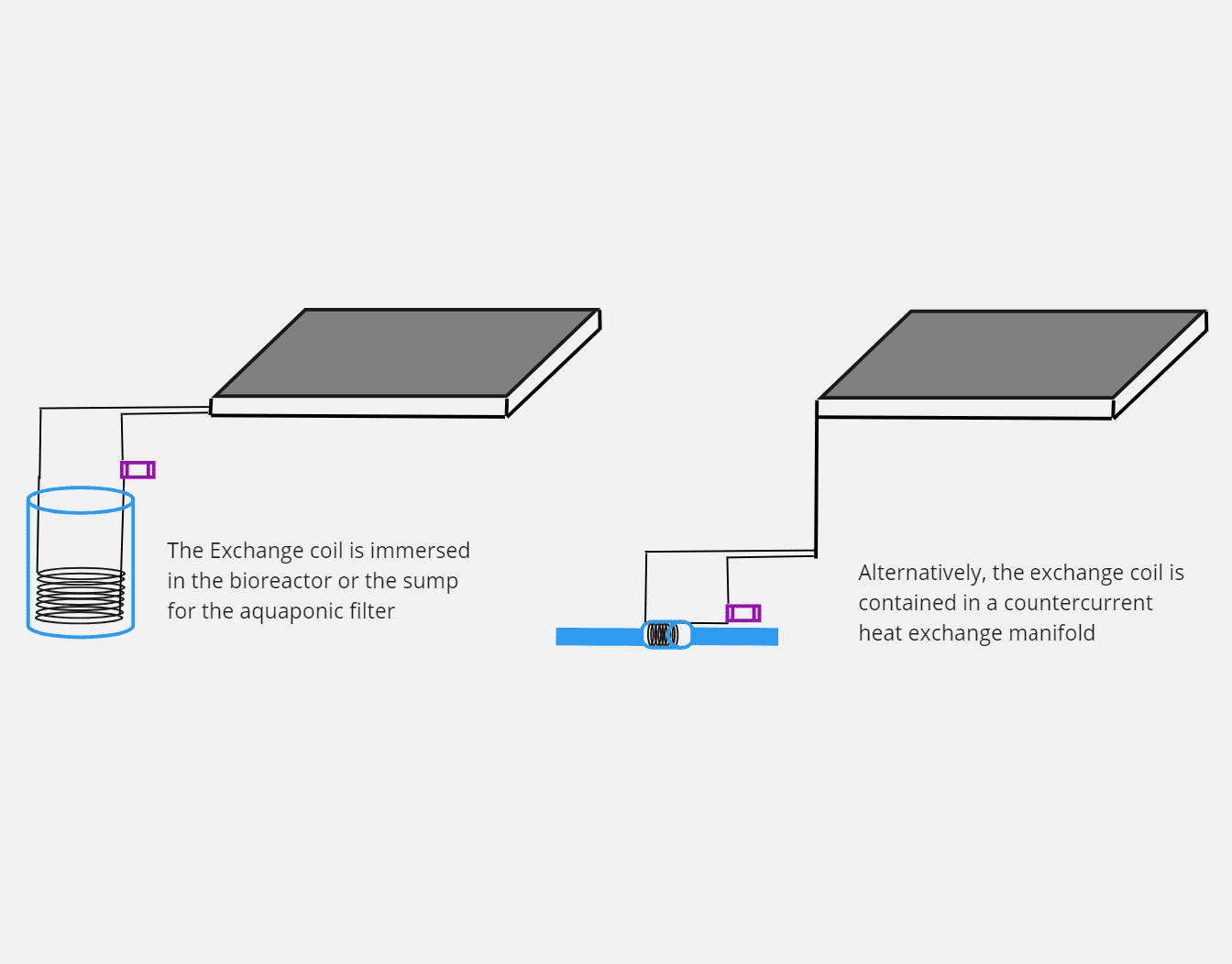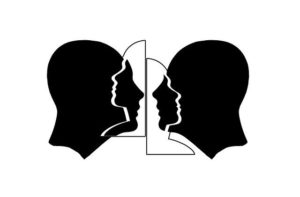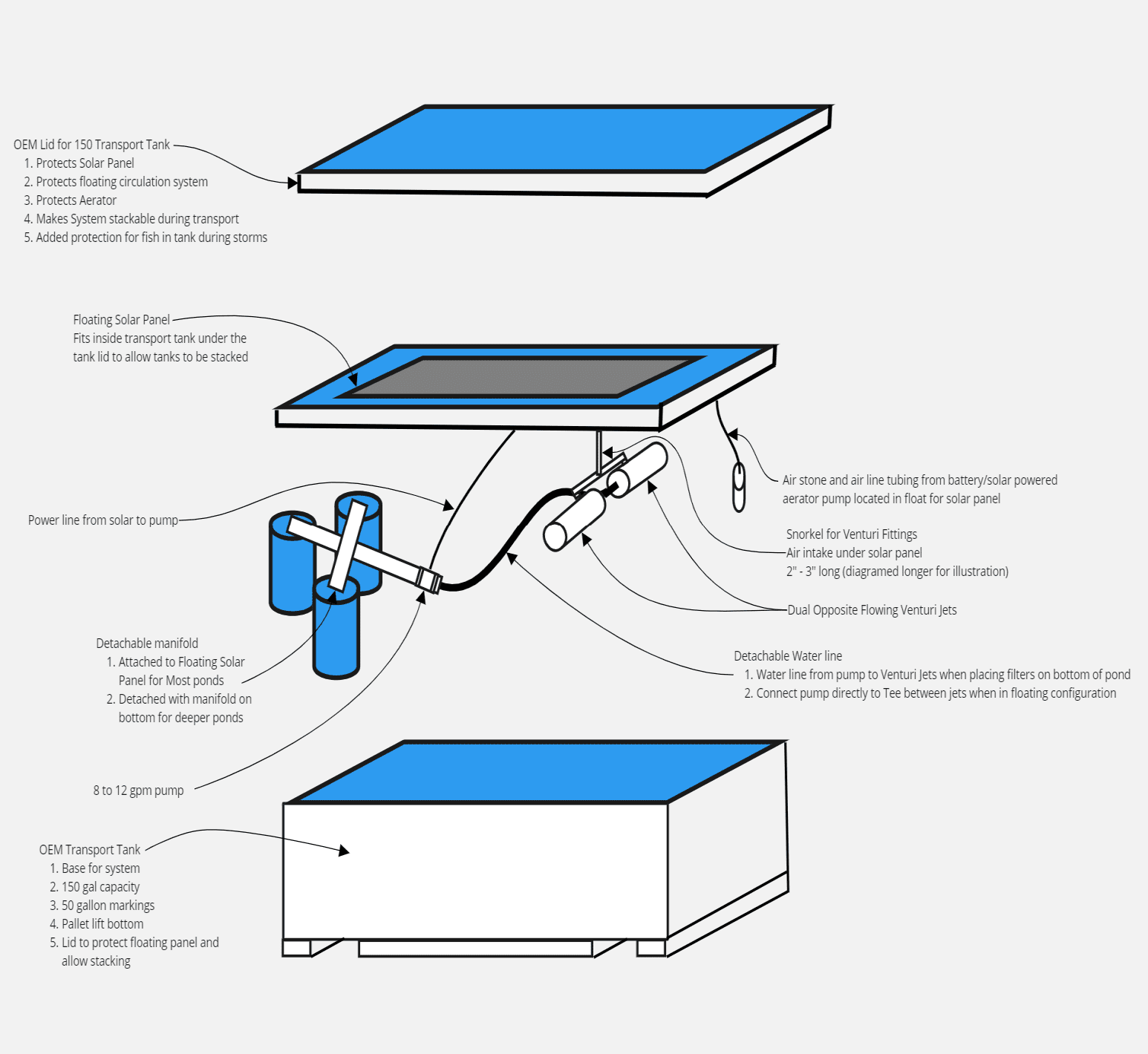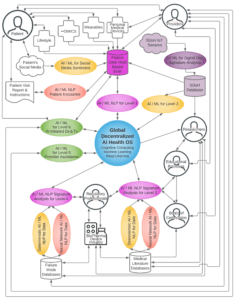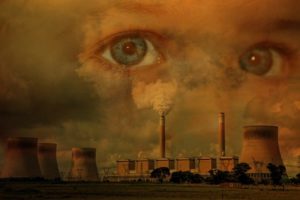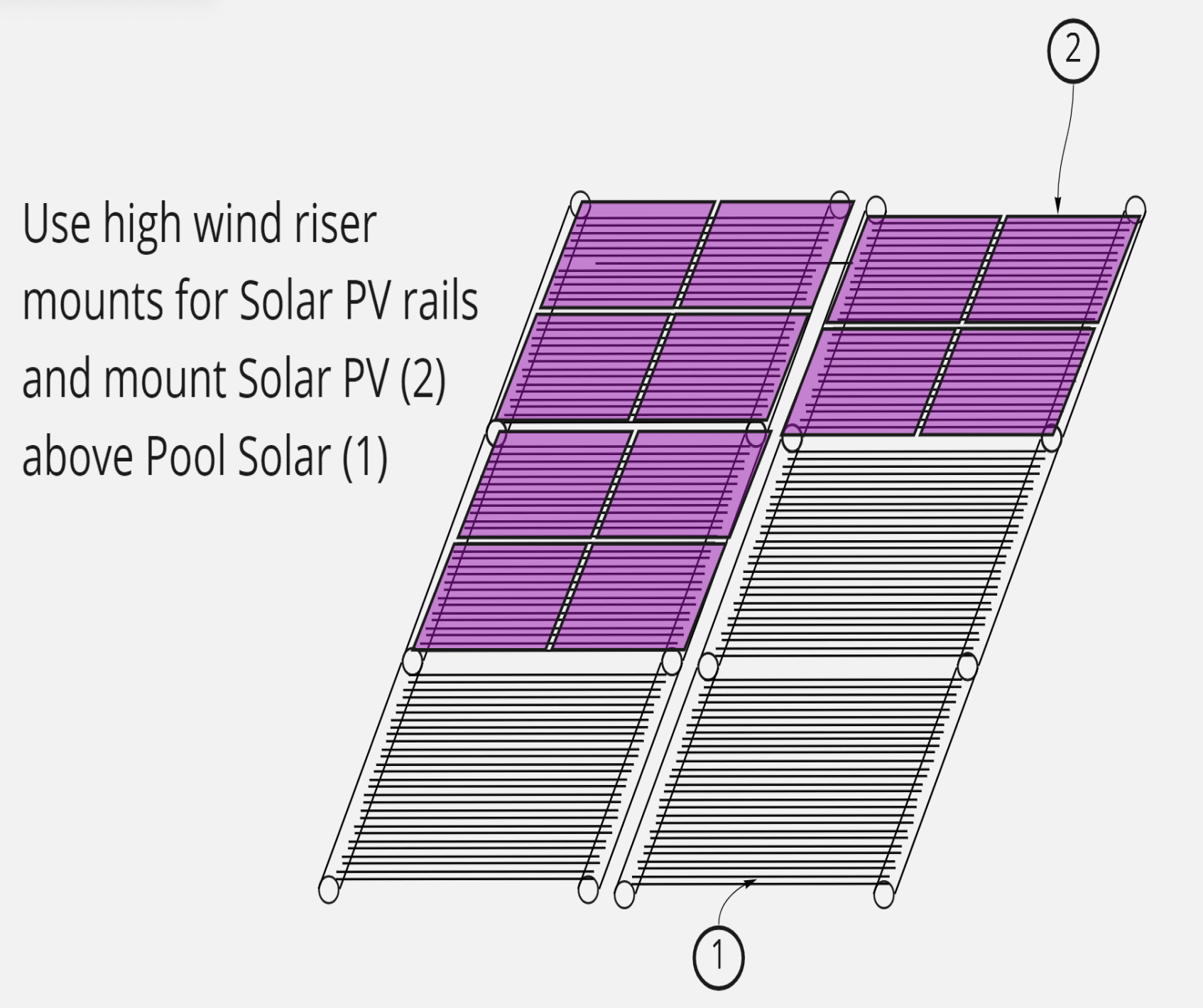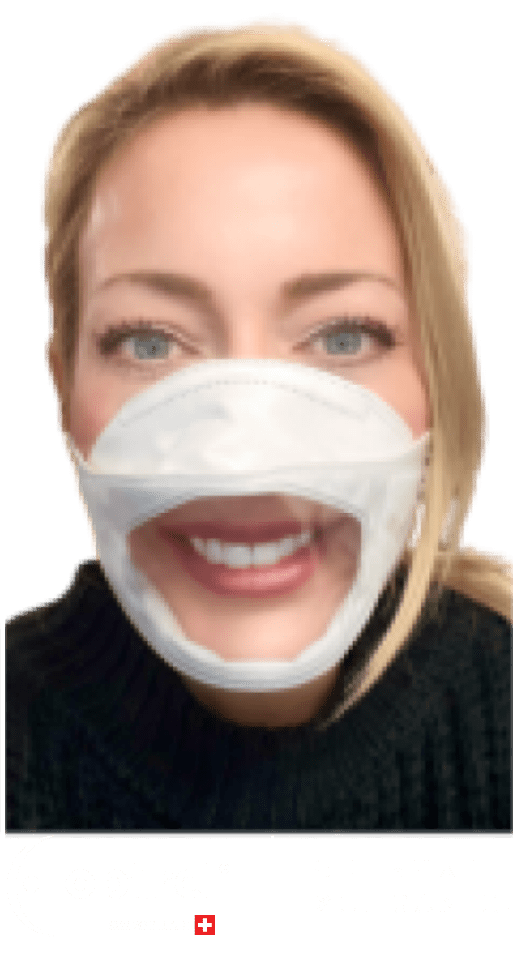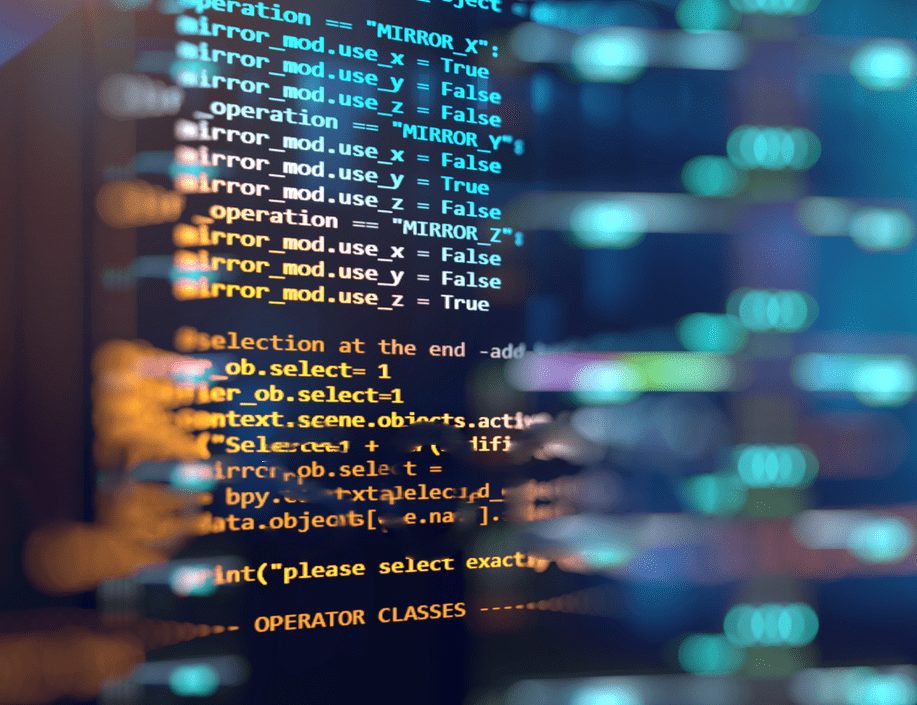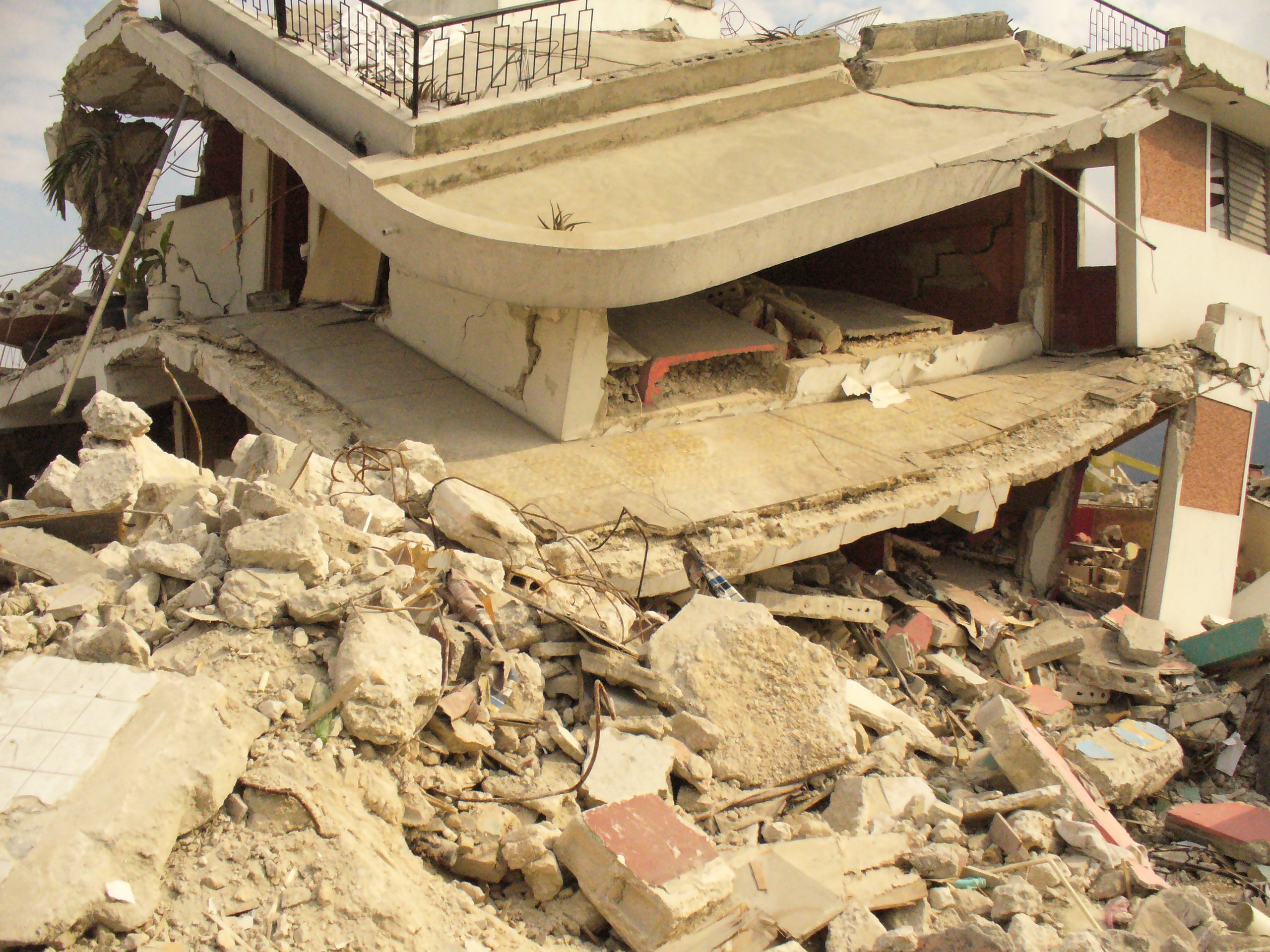COLLABORATIVE EFFORTS ↔ UNEXPECTED SOLUTIONS
Our diverse leadership team has over a century of combined scientific experience in medical, nursing, behavioral health, disaster sciences, and engineering. As subject matter experts, we also have provided support and expertise to researchers and technology developers of Intellectual Property (IP). This connection to a variety of industries was the inspiration for what has become the High Alert Institute IP Donation Program. From the donation of stranded technology-related IP, the Institute facilitates the development of that IP into a successful, marketable product.
The High Alert Institute IP Donation Program seeks to rescue stranded, technology-related IP with the potential for development into marketable products. Once accepted by the program, the owner/inventor is eligible for a tax deduction equivalent to the fair market value of the IP. The Institute receives the patent licensing fees or revenue from the sale of the IP to businesses, helping us to fund our mission. In turn, businesses are able to advance their markets and create jobs for less money than starting a project from scratch.
How Projects4Good Works

BECOME A PARTNER4GOOD
- Partners4Good can request review and assistance for their own project by the Institute expert. The Institute evaluates the request, meets with the project sponsor, and jointly determines if the project has Project4Good potential. For more information on Expert Review & Support, click here.
- Partners4Good can support an existing Project4Good in part or in whole. The provides low or no-cost expert review and assistance to projects with the potential for big benefits for people, places, and the planet. Project sponsors allow the Institute to help projects that would otherwise be unable to afford such expert input. For more information on donating IP, click here.
- Partners4Good can donate qualifying intellectual property (IP) in the form of patent(s) and/or copyright(s). The Institute works with IP transfer organizations and commercialization partners to bring the IP to market. For more information on donating IP, click here.
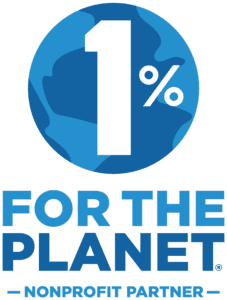
MAXIMIZE YOUR IMPACT
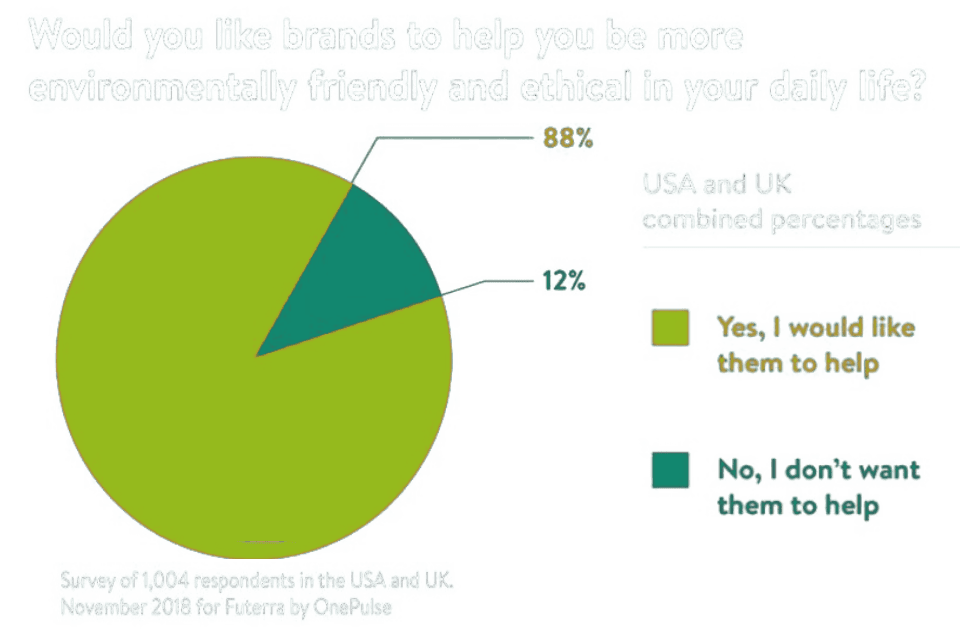
YOUR CUSTOMERS CARE
Animal Welfare
SOLAR AQUAPONIC HEATING & COOLING
Electricity costs are responsible for as much as 95% of the expense of maintaining fish habitats. This is true for zoos, aquariums, fish farms, water gardens, filtered ponds, and private owners alike. The High Alert Institute is working with developers to reduce both the cost and the carbon fuel consumption associated with these aquatic environments.
Second to circulation, the cost of energy for heating and cooling the water is the largest portion of an aquatic or aquaponic system’s operating budget. Filtered swimming pools can be heated and cooled using rooftop solar collectors. However, using such systems for aquatic habitats is problematic: the amount of organic material would lead to bacterial overgrowth and aquatic animal illness.
The High Alert Institute has developed two solutions to reduce the cost of sustaining aquatic habitats. One is an adaptation of existing technology used for household and recreational water systems. And the second is based upon the Institute’s patent-pending solar hybrid system used for pools and spas.
Making Existing Technology Food and Fish Safe
Open-source, closed-loop water systems have a glazed solar hot water heater collector that is paired with a temperature-controlled pump, transferring heat to the water via an immersion coil. But such systems often rely on circulating antifreeze to deliver or remove heat. This would not be appropriate for fish habitats, as the potential for leaking presents a health risk for fish and consumers of fish. By substituting the usual circulating liquid with common vegetable oil, though, the system is transformed into a food-and-fish-safe option. Conversely, an immersion system can cool the habitat by circulating the oil through the collector at night. The end result is a dramatic difference in energy used for temperature regulation by the system. This is less than 1% of the energy required by conventional electric heaters and chillers. Such a system would be ideal for retrofitting nearly any size habitat and can be used when roof space for solar is limited.
High Alert Institute Hybrid System
In this patent-pending open-loop system, standard pool solar heating collectors are employed as both solar heat collectors by day and as radiant heat disbursers by night. As with the hybrid solar pool system, the backless solar panels form a glazed collector box over and around the pool solar panels, increasing heating efficiency for aquatic habitats. When an aquatic habitat is too warm, filtered habitat water is cooled by circulating through the collector at night. This system option would be ideal for yielding maximum energy efficiency and is intended for use with new installations or to retrofit specified types of configurations.
Disaster Behavioral Health Training for Animal Welfare Professionals
High Alert Institute partner agencies and organizations have shared that their independent GAP analyses revealed a shared responder (force protection) need for staff and volunteers, as well as the communities they serve. In evaluating the impact of animal-related disasters, there was a lack of disaster behavioral health training and services available to animal welfare responders and human survivors of animal-related disasters, including the affected communities and industries. The rates of attrition and suicide among responders to animal disasters and the rates of suicide and depression among the human survivors of animal-related disasters parallel the rates seen for human care responders and survivors following mass-casualty events. To address this underserved need, the High Alert Institute has engaged its experts in disaster behavioral health (DBH) and created a program path toward a self-sustaining DBH program for our partner agencies, their industry partners, and related communities. This program path is being developed as a progressive, three-step series of educational courses.
Awareness Demonstrator Course
The High Alert Institute is authoring a DBH Awareness level course based on Psychological First Aid (PSA) and Skills for Psychological Recovery (SPR) best practices. This course will be presented to a pilot audience from each partner agency. In addition to PSA and SPR skills, the course will introduce the use of Artificial Intelligence-based DBH tools, neuro resilience training, and empathy-supportive technologies like see-through masks, designed to improve emotional resilience and recovery in the face of adversity. This course will be recorded and available on the High Alert Institute website after the initial classes. Development of this course will be at the expense of the High Alert Institute, with the potential for some supporter funding.
Responder and Outreach Level Programs
If the Awareness level course addresses the DBH GAP identified by our partner agencies, our experts will design a force protection Responder level course. Concurrently, an Outreach level course will be developed for partner agencies to make available to their industry partners and the communities that our partners serve.
Mobile Neuroresilience STEM/STEAM-based DBH Resource
An adjunct to the DBH Outreach Level Program, the Mobile Neuroresilience STEM/STEAM-based DBH Resource is a deployable mobile STEM/STEAM classroom combined with space-related simulators for K-12 students impacted by local, regional or national disasters. DBH research has demonstrated that trauma-induced pediatric DBH injury is mitigated by returning students to a learning environment. The short-term use of a new or novel curriculum minimized disparity between learners and fosters empathy as students learn new skills together, even if the learning is online or by homeschooling.
Code-named “USS Resilience 988” the STEM/STEAM portion of the deployable resource is based on the High Alert Institute/Intellivance STEAM Program and Neuro Resilience Training System Project4Good combined with the Technology and SciFi Museum’s mobile simulator-based STEM and the Enterprise in Space programs. Although intended as an onsite, in-person classroom, the USS Resilience will also be available as an online and home-school classroom.
Train-the-Trainer and Partner-Owned Program
Once the Responder and Outreach level courses are deployed, the Institute will author Train-the-Trainer programs at all levels so that partner organization staff can become trainers. The goal of the Train-the-Trainer programs is to establish a self-sustaining DBH force and industry/community program of protection, support, and resilience under the ownership and control of each partner organization.
POND EMERGENCY SYSTEM
When disaster strikes, most aquatic pet owners have limited options to secure the safety of their pets. If there is no power to provide aeration, pond fish like koi die quickly and pet-friendly shelters do not have accommodations for our finned friends. Transporting pond fish from their home pond is also not without risk. Provided that floods, toxic gases, and earthquakes are not part of the disaster, pond owners may opt to shelter in place with their finned friends. But even when evacuation is necessary, the ability for many owners to take their pond pets with them would be a significant challenge.
The greatest risk to the fish is loss of electrical or generator power, as most ponds rely on mechanical aeration and filtration. Working with aquatic equipment providers, the Institute designed the Pond Emergency System. This multi-purpose system is comprised of a solar-powered aeration and filtration module that is stored in its own transport tank.
When sheltering in place, the floating module can be placed into the pond to provide aeration and filtration during hours of sun exposure. If the pond layout permits, the module can be connected to the tank lid, which has a built-in battery to extend module usage during hours of darkness. This same module also floats on the water inside the transport tank beneath the lid, if the fish are to be shipped to an aquatic animal rescue/shelter, with the lid’s battery providing aeration and filtration during transport time. As an added benefit, the Pond Emergency System can double as an emergency fish tank or an isolation tank, in cases of pond structure issues or sick/quarantined fish.
Space, AI & Education
SPACE HEALTHCARE POLICY & INFORMATICS WORKING GROUP
The Space Healthcare Policy & Informatics Working Group (SHPWG) is working to prepare space-faring nations and future space communities for the laws and regulations necessary to govern the ethical, evidence-based practice of human and animal healthcare professions beyond the Kemper line. We at the Institute are honored to join esteemed colleges from Enterprise in Space, Kemper University, and the International Space Court Foundation in this endeavor.
While the practice of medicine and other healthcare professions during space flight is governed by the same Earthly international laws and treaties that govern healthcare in International Waters, that regulatory authority disappears when a self-governing or sovereign space community is founded. The ability to self-govern healthcare off-Earth will be further complicated by the fact that it will take as many as 50 years for there to be enough healthcare providers present on other worlds to regulate their own professions effectively. Completing the science, policy, and regulatory groundwork to establish a new Board of Certification or healthcare governing body on Earth typically requires 5 – 10 years of effort by a qualified team. The whole of SHPWG is volunteering their expertise to research the necessary foundational information, to identify regulatory needs, and to advise policy for all disciplines of healthcare practice on other worlds. Ultimately, with an eye toward technological advancement through space exploration and habitation, SHPWG will advocate for healthcare equity regardless of celestial coordinates.
AI-based Decentralized Interglobal Medical Expert System (AI-DIMES)
Healthcare professionals, insurers and governments have long sought to identify “best practices” based on real-world outcomes of treatments in patients based on their electronic medical records. While many programs and research studies have endeavored to accomplish such reviews on a small scale, efforts to expand these evaluations have been stymied by privacy concerns, patient autonomy issues and even national data boundaries. efforts hand. The AI-based Decentralized Interglobal Medical Expert System (AI-DIMES) Working Group is authoring a framework for artificial intelligence-based algorithms designed to evaluate the outcomes of patient treatments from electronic medical records while complying with privacy regulations, maintaining patient autonomy and respecting national data boundaries. We at the Institute are honored to join esteemed colleges from Singularity, Kemper University, and the International Space Court Foundation in this endeavor.
The open-source framework for decentralized healthcare AI outcomes database powering expert systems is an implementation model based on Katzenberg’s Six-level healthcare AI concept (2017). In the DIMES-WG model, personal AI engines for each individual would correlate individual demographics and medical data with diagnoses, treatments, Determinants of Health (Doha), outcomes, adverse events, and failure modes using a blockchain model for privacy and anonymization (Level 1 & 3 Healthcare AI). Each healthcare provider would have a similar personal AI engine correlating the outcomes, adverse events, failure modes, etc., within each provider’s patient population (Level 2 Healthcare Informatics AI. Competitive AI Natural Language Processing engines interrogate the peer-reviewed and preprint scientific literature correlating outcomes data with regulatory databases for adverse events, failure modes, recalls, and advisories (Level 4 Healthcare AI). Using a combination of Machine Learning, Deep Learning, and Swarm Learning, these personal & provider AI engines then correlate data the data from Levels 1, 2, 3 & 4 to compile a decentralized interglobal (intergalactic) database of healthcare outcome predictors that power an Expert System (software as medical device or SaMD) that advises healthcare providers and patients on possible diagnoses with relative probability; treatment options with a personalized probability of success/side-effects; and trade-offs for less optimal options that fit patient preference and lifestyle better thus supporting patient autonomy and choice (Level 5 Healthcare AI). Finally, for austere environments on Earth and in space, the ability to initiate or independently assist in treatment (Level 6 Healthcare AI/ML system). Such a Level 6 Healthcare AI/ML system is no longer a SaMD under the control of a licensed provider but a new type of provider.
Intellivance – STEAM Program and Neuroresilience Training System
The concept of learning loss has become familiar to most parents and educators, following the school closures that occurred during the COVID-19 pandemic. Even prior to 2019, learning loss was a known problem for special needs learners. Whether learning loss impacts neurotypical or neurodiverse students, such deficits can magnify the disparities in emotional and educational determinants of health. By young adulthood, students with learning loss can find themselves economically behind, socially humiliated, and academically traumatized. But a new STEAM program based on technology developed by Intellivance supports recovery after learning loss for neurotypical, neurodiverse, and special needs learners alike. In addition, this technology may provide a novel path to recovery for survivors of neurological injury, regardless of baseline – neurotypical, neurodiverse or special needs.
STEAM programs fill an important gap in education today. The STEAM acronym stands for Science, Technology, Engineering, Arts, and Mathematics. These programs combine the 5 subject areas known to increase critical thinking and problem-solving skills through unique hands-on learning opportunities. Students participating in STEAM classes prepare for successful futures through exposure to left-brain or didactic skills, as well as right-brain or creative skills. Didactic skills are developed through science, technology, engineering, and mathematical activities. Creative skills are fostered through art, music, language, and physical education. Together, didactic and creative studies broaden the scope of learning and creativity, further serving to lay a solid foundation for neuroresilience.
Studies of neurorehabilitation following traumatic brain injury, stroke, intracranial bleeding, aphasia, and other neurological injury have demonstrated time and again that neuro resilience is influenced by prior learning. People with literature, language, music, fine arts, and/or athletic training (right-brain skills) plus science, math, and/or logic training (left-brain skills) recover faster and to a greater degree than those with a less comprehensive educational history. Many experts believe a more comprehensive educational history allows the brain in recovery to recruit previously trained neural pathways to replace damaged pathways.
The Project4Good with Intellivance will explore the application of their technology to promote neuro resilience in a new way. Based on the All Hazards/One Health/One Framework paradigm, the goal is to mitigate the impact of natural or man-made disasters upon children and their educational success.
One Health/One Nature
Environmental Restoration – Abatement of Fluorinated Hydrocarbons
For more than 120 years, fluorinated hydrocarbons (FHCs) have been part of our world. The strength of the chemical bond between fluorine and carbon atoms in FHC compounds has led to the development of many products that are durable and resistant to other chemicals. Stain repellents, fire retardants, nonstick cookware, and coolants are a few examples of common materials made from FHCs. The same property that makes FHCs so valuable, however, is also what makes disposing of them so challenging. And understanding the biological activities, metabolism, degradation, and possible environmental hazards of FHCs is therefore critical.
The High Alert Institute has partnered with Five Bugles Institute and INSP for the FHC Project4Good. The purpose of the FHC Project4Good is to:
- Educate and Raise Awareness in the general public for the environmental impact of FHCs and PFAS in an All Hazards, One Health/One Nature, One Framework paradigm.
- Educate and Raise Awareness among environmental not-for-profits, agencies and NGOs for the environmental solutions/benefits of SCWO technology in an All Hazards, One Health/One Nature, One Framework paradigm.
- Match SCWO technology providers from INSP with Environmental not-for-profits, agencies and NGOs to address specific habitat cleanup opportunities
- Reduce the environmental, health, climate and societal impact of FHCs and PFAS through the systematic removal of FHCs and PFAS using SCWO technology.
FHC are potent greenhouse gasses, and some form toxic compounds that can accumulate in the environment. One type of FHC, the ozone-destroying chlorofluorocarbons (CFCs), has now been widely banned under the Montreal Protocol, but the two other main types also present environmental problems. One of them is now used instead of CFCs as a coolant in refrigerators and air-conditioning units. Where such refrigerants leak into the environment, they function as greenhouse gasses that are a thousand times more potent than carbon dioxide.
FHCs are potent greenhouse gasses and are responsible for enormous quantities of fluoride ions being released into the biosphere. To date, only one type of FHC has been banned (chlorofluorocarbons) but there are hundreds still in widespread production and use. And all form toxic compounds that can accumulate in the earth-bound environment. One type of FHC familiar to many people is used as a coolant in refrigerators and air-conditioning units. When these consumer or industrial products leak into the air or soil, the FHC gasses released are a thousand times more potent than carbon dioxide.
FHCs are used in many medical applications, such as coatings on surgical equipment and in the manufacture of materials used for medical treatment and devices. These same compounds comprise a majority of firefighting foams and are a by-product of the aluminum industry. FHCs are toxic and accumulate in all aspects of the food chain. The impact of these compounds on the risk of cancer, birth defects, and other health problems has become a growing field of research. Of particular emphasis in the news lately has been a type of FHC known as PFAS, which stands for per- and polyfluoroalkyl substances. PFAS is but one FHC found in water, air, fish, and soil at locations around the globe and has been linked to harmful health effects in humans and animals.
The impact of removing FHCs from the environment, as well as the enormous task of doing so, can only be appreciated by first exploring the often unappreciated and pervasive spread of FHCs. Pollution abatement processes have been developed to rapidly break down FHCs, destroying the build-up of chemicals that would otherwise persist for decades or centuries. These proven, on-site solutions are able to destroy over 99.99% of FHCs in contaminated air, water, and soil without creating secondary waste or storage of byproducts. Yet acceptance and use of these solutions remains an uphill battle.
Supercritical oxidation processes can rapidly break down FHCs that do not oxidize readily at standard temperatures and pressures, destroying chemicals that would otherwise persist for decades or centuries in the environment including:
- Landfill Leachate – A proven on-site solution that destroys over 99.99% of FHCs in contaminated landfill leachate without creating secondary waste.
- Wastewater – Destroys FHCs to non-detect levels in contaminated wastewater. Working on-site and only producing inert salts eliminates the need for incineration or storage of byproducts.
A supercritical fluid is a substance held at a temperature and pressure above its critical point. In this state, the fluid is neither a liquid nor a gas and has properties of both. Substances begin to act differently above the critical point. Supercritical water is highly expandable and compressible. Without distinct liquid and gas phases, mass transfer is unrestricted, facilitating chemical reactions. Using supercritical water oxidation technology (SWTO) to fight the contaminants has heretofore unobtainable benefits:
- Proven complete destruction of PFAS, regardless of carbon chain length or structure
- Versatile SCWO technology can treat any FHC or PFAS concentration or matrices
- No unwanted or harmful byproducts, no contaminant transfer, no need for HAZMAT storage.
- Equally effective on common organic co-contaminants (petroleum, hydrocarbons, chlorinated solvents)
- Uses inexpensive oxidation and neutralization chemicals
- Can operate on house or generator power and is not energy intensive
AEOLIAN WIND TECHNOLOGIES
As a result of increasing demands for renewable energy, there is an increasing demand for wind turbines of all sizes both on and off the grid. The Aeolian Wind system is a patent-pending approach to mitigating the noise created by the turbine, blades, and supporting tower that is further amplified by the tower design. Owned by the Institute, this solution provides a cost-effective approach to mitigating the risks of sound pollution. The World Health Organization (WHO) has published new environmental and ambient sound guidelines for home, work, transportation, and renewable energy. These guidelines are based on Social Determinants of Health (SDoH) data and present the effects of the relative loudness of sounds in the air, as perceived by the human body. Measured on the decibel A scale (dBA scale), the same scale used to monitor sound levels for safety in the workplace, analysis of this data showed that the level of safe exposure was a daily average of 45 dBA. And for every 10 dBA above the 45 dBA threshold, the relative risk for death by ischemic heart disease (heart attack) and stroke increased by 14%.
Based upon the WHO’s results, despite meeting current US and EU standards, the risks associated with average daily exposure to a 50 dBA wind turbine, then, would impose a 7% increased risk of heart attack and stroke. But many wind systems create even higher dBA levels, owing to amplification. Mitigating these risks hinges upon reducing the dBA exposure, which is precisely why the Institute is pursuing commercialization of the Aeolian Wind system. The materials used in this system to absorb sound, vibration, and resonance are combined with sonic sails, sound clouds, and vibration isolators to reduce dBA exposure to safer levels.
HYBRID SOLAR POOL SYSTEM
The Institute is actively involved in taking a new product to market to benefit owners of an existing or new installation of solar heating systems used for their pool or spa. As a result, owners in a variety of climates would be able to extend their season of heated water for these activities without increasing their carbon footprint. Most roofs have limited space in the optimal location for solar collectors. This puts solar heater systems for pools and spas in competition for optimal placement with other solar equipment, such as solar electric panels and solar hot water heaters. In sunny climates, optimally placed and sized solar systems for heating pools and spas provide sufficient heat for 70% – 100% of the year. Average climate solar markets, by comparison, generate sufficient heat for pools and spas only 60% – 70% of the time using the same systems. When in climate zones subject to freezing temperatures, such systems provide usage less than 50% of the year.
The Hybrid Solar Pool System is a patent-pending approach to improve solar energy collection, combining backless solar PV panels with standard pool water heating systems in the same roof space. Depending upon budget or convenience, the hybrid system can be installed all at once or in stages and costs about the same if the two collection systems were installed individually. The end result is an extension of the pool and spa season up to 80% – 100% of the year in non-freeze climates and greater than 60% of the year in climate zones subject to freezing. And the payback period for the hybrid system is about the same as a standard solar PV system (less than 7 years) – but with the lifestyle advantage of significantly extending the pool and spa season without supplemental heating bills.
OPTREL SEE-THRU N95 MASK
The COVID-19 pandemic has taught many lessons. Often lost among the rhetoric is the impact of masks on the ability of individuals, with or without hearing loss, to communicate. Complaints of mask wearers being muffled when speaking is due to the effect of the mask on sound plus the effect of the listener being unable to see the mouth of the speaker. Without knowing it, most people, regardless of culture or upbringing, read lips to some degree while listening. This not only helps with understanding the spoken words but also the sentimentality of the message, as communicated through facial expressions.
Everyone working with people or animals needs to have their spoken message understood and they need to convey emotion. From healthcare workers, first responders, teachers, and counselors to clergy, veterinarians, animal caretakers, and service/hospitality personnel – that need is the same. And facial expressions are a common way to demonstrate empathy, conveying that the participants in a conversation understand each other emotionally as well as verbally.
To eliminate the communication barrier posed by traditional masks while protecting yourself and those around you, one of the Institute’s partners, Optrel, created the clear face mask. The Optel P.AIR Clear is a NIOSH-approved N95 mask made with the highest quality materials for comfort, communication, and filtration. Technically a medical respirator, the P.AIR Clear N95 mask features an anti-fog coated transparent window, 2 latex-free head straps, and an adjustable padded nose clip. The Institute is currently assisting Optrel to present the P.AIR Clear N95 mask to a broad spectrum of industries that need worker protection and clear, empathetic communication.
POCKETSTREAM – HYDRATION AT THE PUSH OF A BUTTON
As climate change creates an increasing need for hydration and habitat destruction creates an increasing scarcity of potable water, effective hydration is proving to be more difficult for a wide range of people. When added to a disability, illness or infirmity, inadequate hydration because a major health challenge.
People with disabilities, those who are bedridden, and anyone who has difficulty reaching, holding, or carrying water to their mouth will be pleased to know that Agape Venture, LLC (another Institute partner) has dedicated its resources to making the vital task of hydration less of a challenge. In fact, POCKETSTREAM makes staying hydrated easier and supports independence at the same time.
POCKETSTREAM is an assistive technology for people with hydration challenges. Functioning as a portable drinking fountain, POCKETSTREAM’s patented rechargeable hydration delivery system is an effortless experience for children to seniors. With its wide array of reusable straw configurations to fit a variety of needs, staying well hydrated has never been easier.
IMAGE SPECTROPHOTOMETRY APP
Image spectrophotometry is a branch of spectrophotometry that uses a digital camera to measure wavelengths of light that are absorbed, reflected by or transmitted through a solid, liquid or gas. Such images for analysis may be static or video and are used to analyze the composition of the material imaging.
The Image Spectrophotometry App is a patent-pending approach to the use of standard cellphone cameras and accessories to perform spectrophotometry.
CYANIDE ANTIDOTE DELIVERY METHODS
Cyanide is an extremely toxic poison and a major contributor to death from smoke inhalation. In the absence of rapid and adequate treatment, exposure to a high dose of cyanide can result in death within minutes. Signs and symptoms of acute systemic cyanide poisoning may develop within minutes, depending upon the route and extent of cyanide exposure. Hydroxocobalamin, a relative of vitamin B12, is an effective antidote for cyanide poisoning. While hydroxocobalamin is typically administered by intravenous infusion, research has demonstrated that large doses of hydroxocobalamin can be administered intranasally, intrarectally, and even by inhalation. The CyanoStat system is the Institute’s open-source approach to the intranasal, intrarectal, or inhalation administration of hydroxocobalamin antidote for cyanide exposure.
RECONDITIONING PAPRs FOR FHCWs
The first six months of the COVID-19 pandemic demonstrated the failure of the healthcare industry to ensure the supply, as well as supply chain, of basic personal protective equipment (PPE) for Frontline Healthcare Workers (FHCWs). Working with our stock of donated Purified Air Powered Respirators (PAPRs) used for training exercises, the High Alert Institute developed techniques for reconditioning Class C PAPR systems for use by FHCWs during times of PPE shortages.
READ MORE….
To address shortages of the single-use batteries used in PAPRs, the Institute published a set of written instructions showing how to replace these original batteries with rechargeable batteries commonly used to light Exit signs in any public building. In addition, we published written instructions for replacing the limited-life filter cartridge material with readily-available HEPA filtration material from home supplies stores. The Institute produced videos to demonstrate these techniques, which were shared with various international organizations and new agencies. We also joined with our corporate sponsors, advocating for an Essential Workers Bill of Rights to protect those on the frontline of the COVID-19 pandemic and all subsequent disasters.
BUILDING VENTILATION SYSTEMS & STANDARDS
SARS-CoV2, the causative virus for COVID-19 and the global pandemic, demonstrated the ease with which illnesses can be spread by recirculated air in even the most modern of buildings. COVID-19 also provided unprecedented evidence of the health effects of air quality on acute illness and infection. Starting before the pandemic, the High Alert Institute was working with corporate partners to support mitigation of the impact of these Social Determinants of Health (SDoH) via air quality responsive whole-building ventilation.
The Institute’s headquarters offices benefit from a proof-of-concept whole building ventilation control system. This controller not only improved HVAC efficiency by 40% but also helped the Institute maintain a “COVID Bubble”, protecting both immunocompetent and immunocompromised Institute staff and Board Members. We also joined our corporate sponsors in calling for Whole Building Ventilation Standards to protect those who live, work, shop, play, and worship in homes, high-rises, and buildings of all sizes from indoor pollutants and airborne illnesses.
HAITI EARTHQUAKE RESPONSE AND RECOVERY
Following the devastating earthquake of January 2010, officers of the Institute deployed to Haiti to serve in a variety of disaster response and recovery roles. We partnered with a number of corporations and not-for-profits to support healthcare and disaster behavioral health interventions, provide innovative telemedicine technology, and join in the coordination of international efforts for disaster recovery.
The Institute coordinated with local physicians, healthcare facilities, and Haitian government agencies to accomplish the following:
• Worked with not-for-profit partners to provide direct healthcare and behavioral health services
• Secure delivery of donated healthcare supplies and communications equipment (private donors)
• Worked with customs officials to bring $13 million dollars’ worth of medications legally into the country for appropriate distribution (not-for-profit donor)
• Provided a disaster response database for US government officials to inventory and track the distribution of supplies (corporate partner)
• Successful field testing of a handheld telemedicine/two-way video conferencing system, facilitating appropriate healthcare under severe operating conditions (corporate partner)
• Authored the Combined Omnibus Haiti Recovery Plan, commissioned by the Clinton-Bush Haiti Fund, for the reconstruction and reconstitution of the eighteen critical infrastructures and key resources of the nation of Haiti (numerous academic, private, not-for-profit and corporate partners)
PORTABLE PERSONAL EMR
Our very first project for good was in a portable personal electronic medical record (EMR), contained in a wearable USB drive. The goal was to provide increased patient autonomy and patient safety by placing the consolidated medical record in the patient’s hands and in their control. Based on an idea proposed by W. David Stephenson of Stevenson Strategies in a September 26, 2006 blog entry, he suggested that people carry their medical records on secure U3-enabled USB drives. Such devices were already embedded in credit card-sized wallet drives, wrist watches, necklaces, key rings, pens, and every manner of business sundry.
Healthcare professionals would not be inclined o look for a USB drive in a patient’s pockets but a USB drive watch, wrist band, pendent or wallet card was an appealing merger of form and function. To quote Mr. Stephenson, having such a product on hand during a disaster would be “a literal and figurative lifesaver, because you’d not only have your medical records in hand, but also all of your critical applications and business files as well.”
Unfortunately, by 2008, most healthcare systems had implemented cybersecurity protocols that precluded the use of non-facility and unapproved USB devices with healthcare facility computers. Today, there is still no consolidated personal medical record but advances in Block-Chain technology are bringing us closer to this major advance for patient autonomy and patient safety. Some day in the not-too-distant future, every patient will have access to a single consolidated health record to share with every member of their healthcare team.
High Alert Institute
4800 Ben Hill Trail
Lake Wales, FL 33898
Office: 863.696.8090
FAX: 407.434.0804
Info@HighAlertInstitute.org
Privacy Policy
Cookie Policy
Terms of Use
Disclaimers
Get Your Data
Shipping Policy
Message Us
Transparency
Registrations
Do Not Sell Info
Return Policy
A COPY OF THE OFFICIAL REGISTRATION AND FINANCIAL INFORMATION MAY BE OBTAINED FROM THE DIVISION OF CONSUMER SERVICES BY CALLING TOLL-FREE, WITHIN THE STATE, 1-800-435-7352 (800-HELP-FLA), OR VISITING www.FloridaConsumerHelp.com. REGISTRATION DOES NOT IMPLY ENDORSEMENT, APPROVAL, OR RECOMMENDATION BY THE STATE. Florida Registration #CH68959
REGISTRATION WITH A STATE AGENCY DOES NOT CONSTITUTE OR IMPLY ENDORSEMENT, APPROVAL OR RECOMMENDATION BY THAT STATE.
